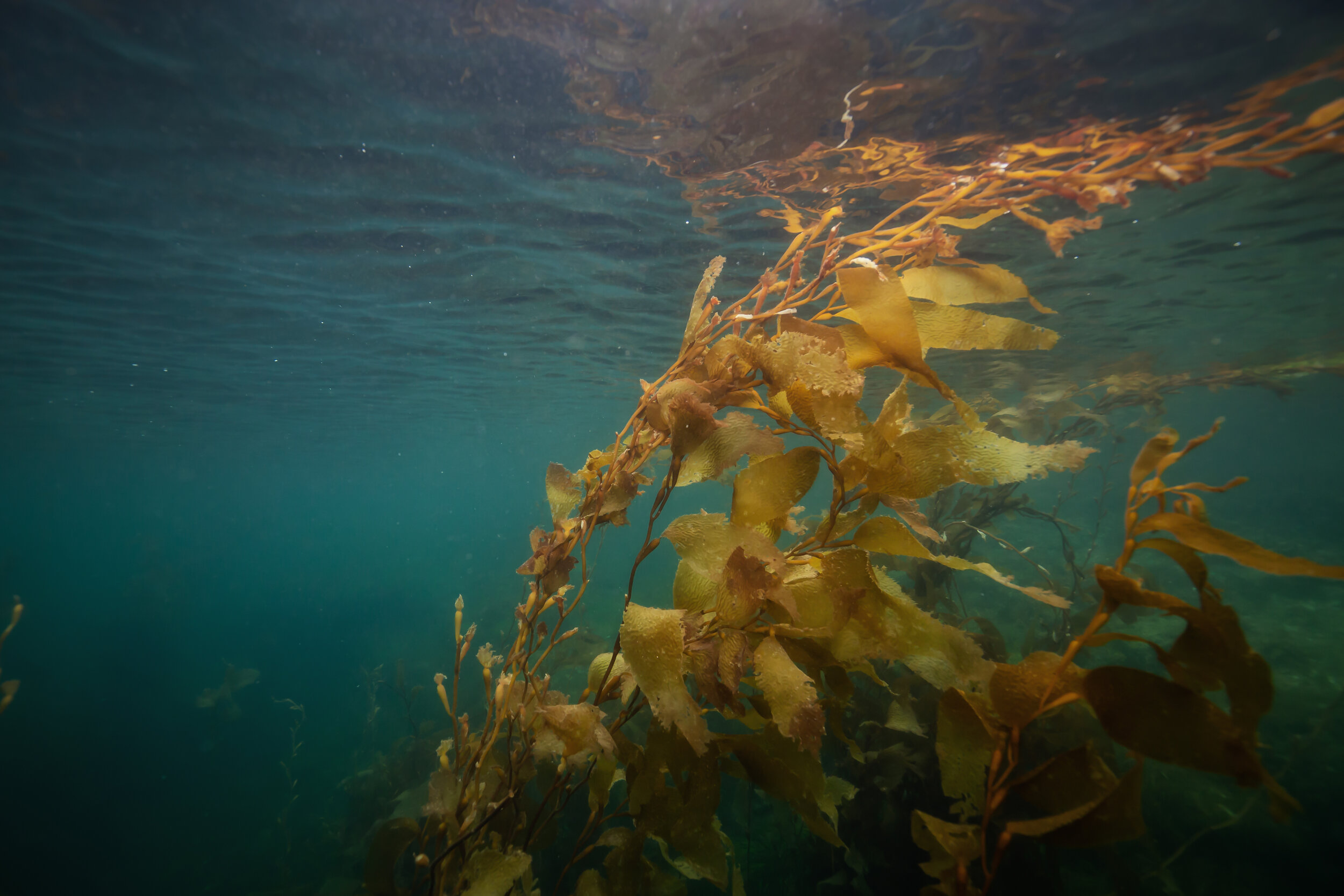
Seaweed is kelping our
climate & economy
For a long time, the oceans have been viewed as an infinite source of revenue, food, and convenience where we could fish endlessly and dump all our sewage and waste products. It’s not until somewhat recently that the world has started reviewing its practices and trying to improve how we treat the ocean as we slowly begin to understand not only its significance, but also what it can offer if human activity is managed correctly. As part of this realization, we’ve developed the blue economy and began to critique industries like aquaculture which has several controversial impacts to the environment. However, through many of these conversations, aquaculture continues to be a term affiliated with finfish – such as Atlantic salmon (Salmo salar) farms along Vancouver Island, British Columbia. When managed poorly, finfish aquaculture in open-net pens can create dead zones and spread disease, but there are other areas of aquaculture that can provide more benefit with less risk such as seaweed.
How does seaweed fit into a blue economy?
Looking first at the ‘economy’ portion, in 2011 the annual seaweed yield was 21 million wet tons at a value of US$ 5.4 billion globally. With the World Bank’s estimate of one job per 10 dry tons and a standard seafood secondary-employment multiplier of 2:1, seaweed aquaculture – as reported in 2011 – directly employed over 1 million jobs and 2 million indirectly across the world. The World Bank has also estimated seaweed aquaculture could produce 500 million dry tons employing 150 million people directly and indirectly within 40 years. With this growth and the anticipation of a global population over 9 billion by 2050, seaweed can provide not only a significant source of revenue, but also employment in a sustainable sector.
Moving on to the ‘blue’ portion of the blue economy, many people consider the Amazon rainforest to be a significant producer of global oxygen and often referred to as the Earth’s “lungs”. However, the Amazon is estimated to contribute less than 10% of global oxygen levels. Algae and seaweed on the other hand was and continues to be the life-giving organisms at more than 50% atmospheric oxygen production with some estimates suggesting more than 80%. Commercial seaweed production by 2050 (500 million tons of dry weight) is also anticipated to take up only 0.03% of the ocean’s surface. When comparing to agriculture’s water consumption rate at 70% of our freshwater usage, seaweed does not require the extraction of freshwater from important aquifers or lakes and doesn’t contribute to water pollution by fertilizers. Seaweed usage in animal feed has also been reported to reduce methane production and offers alternative solutions to Omega-3 fatty acids which could contribute to reducing wild fish harvests. Seaweed offers numerous benefits with minimal costs relative to existing industries and offers a passive environmental benefit. It also offers safety for juvenile salmon and other animals who have struggled to adapt to our extractive practices in the ocean that devastated kelp forests like shipping lanes and forestry.
When we think of agricultural crops, typically seaweed is not on the forefront of our minds. That’s because seaweed differs from land use crops in a multitude of ways - for the better. Unlike land crops, seaweed requires no freshwater input, arable land use, and fertilizers. It is because of these reasons and it’s ability to grow a blue economy that makes it the agricultural crop that will create a sustainable future.



